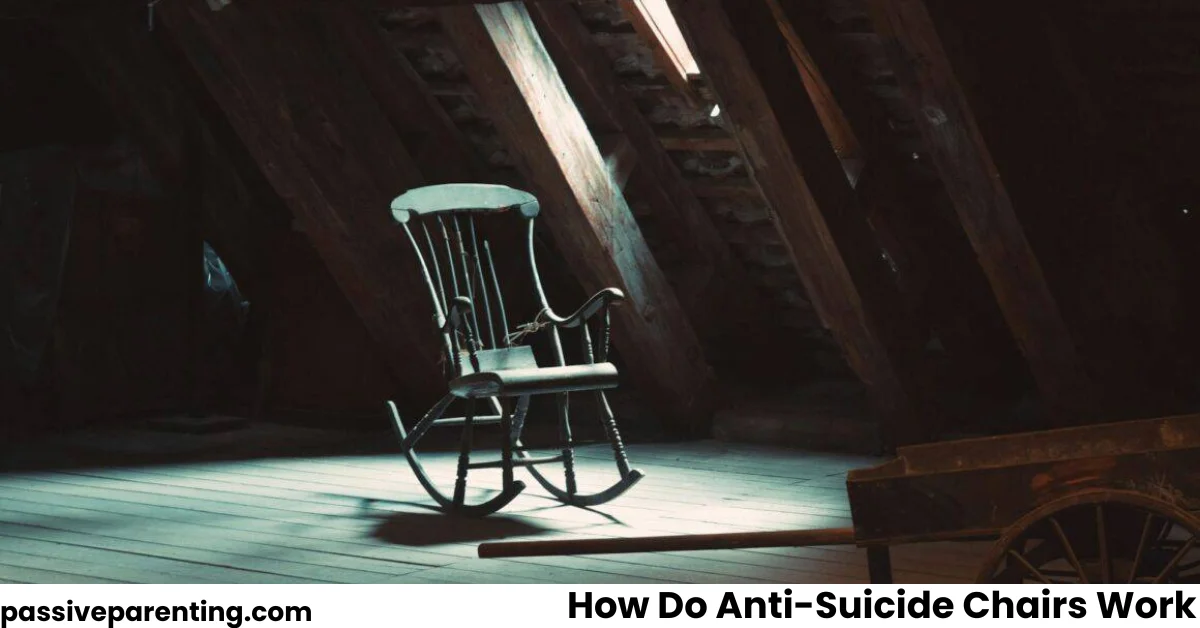Suicide prevention is one of the most pressing concerns in institutions such as colleges, prisons, and healthcare facilities. While awareness campaigns, counseling services, and crisis hotlines play a crucial role, the physical environment also has a strong influence on mental health outcomes. Among the safety-focused designs developed in recent years, anti-suicide chairs stand out as innovative furniture solutions that actively contribute to reducing risks of self-harm.
But how do anti-suicide chairs work in practice, and why are they becoming increasingly common in spaces where safety is paramount? This article explores their design, mechanics, psychological significance, and broader role in creating supportive environments.
The Purpose Behind Anti-Suicide Chairs
The primary function of anti-suicide chairs is to eliminate opportunities for self-harm. Unlike regular furniture, they are built with thoughtful safety-first features that prevent misuse. Their importance lies not just in deterring impulsive acts but also in symbolizing a proactive commitment to mental health and well-being.
- They serve as physical barriers against dangerous behavior.
- They provide comfort and functionality for daily use.
- They act as visual reminders of care and support within institutions.
In high-stress environments such as universities or rehabilitation centers, these chairs can literally make the difference between crisis and safety.
In inpatient psychiatric settings, the risk of suicide is estimated to be up to 50 times higher than in the general population, highlighting the extreme importance of environmental safeguards and purpose-built furniture.
Design and Components of Anti-Suicide Chairs
Understanding how anti-suicide chairs work starts with their structural design. Every feature, from the materials to the shape, is chosen to reduce risks while maintaining comfort and usability.
Non-Movable and Secure Components
One of the most defining characteristics of these chairs is the absence of detachable parts. Unlike ordinary furniture, which can be disassembled or broken into harmful pieces, anti-suicide chairs are manufactured as solid, fixed units.
- Seats, cushions, and armrests are securely attached.
- There are no screws, bolts, or loose fittings that could be removed.
- The structural integrity remains intact even under extreme pressure.
This design ensures both durability and safety, reducing any chance of the chair being converted into a harmful tool.
Comfort and Ergonomics
It may seem surprising that a chair built for safety can also be comfortable, but comfort is an essential part of the design philosophy. Research shows that physical comfort can influence emotional stability, reducing stress and anxiety.
- Anti-suicide chairs are ergonomically designed to promote good posture.
- Cushioned seating reduces strain and encourages relaxation.
- Weighted bases or anti-tipping mechanisms add both comfort and safety.
By blending functionality with safety, these chairs integrate seamlessly into dormitories, hospitals, and community spaces without drawing unwanted attention to their purpose.
Weighted and Anti-Tipping Features
Another key component lies in their stability mechanisms. Many anti-suicide chairs are designed with heavy bases or bolted-down fixtures to prevent movement.
- Weighted bottoms stop the chair from being lifted or thrown.
- Anti-tipping designs make it nearly impossible to overturn them.
- Bolted models are fixed to the floor for maximum security.
These features prevent the chair from being weaponized while maintaining its usefulness as everyday seating.
Hospitals and behavioral health centers increasingly adopt ligature-resistant furniture and fixtures, with over 70% of inpatient suicides involving self-harm opportunities in clinical settings
The Mechanics Behind Anti Suicide Chairs
Beyond design, the mechanics of how anti-suicide chairs work involve structural reinforcements and subtle safety features that discourage self-harm without compromising usability.
Reinforced Materials and Durability
These chairs are made of reinforced, high-strength materials that are extremely difficult to damage. Unlike traditional furniture, which may crack, splinter, or break into sharp edges, anti-suicide chairs resist such wear.
- Steel frames or high-density composites form the backbone.
- Surfaces are smooth and resistant to chipping.
- Materials are long-lasting, ensuring safety over years of use.
This makes them particularly well-suited to high-traffic environments like dormitories and psychiatric facilities.
Curved and Sloped Surfaces
Designers also pay close attention to eliminating ligature points and sharp edges. Anti-suicide chairs feature rounded edges and sloped surfaces that minimize the chance of injury.
- No sharp corners or angles.
- Smooth contours prevent ropes or cords from being tied.
- Ergonomic shapes add to comfort while reinforcing safety.
These simple design tweaks make chairs safer without making them look institutional or overly clinical.
Technological Enhancements
Some models incorporate advanced engineering or technology to improve their safety performance:
- Integrated floor bolts to keep chairs stationary.
- Hidden reinforcement within cushions and frames.
- Weight distribution systems that resist lifting or throwing.
These innovations enhance safety while maintaining discreet, user-friendly designs.
Importance of Anti-Suicide Chairs in Colleges
Nowhere is the role of anti-suicide chairs more important than in colleges and universities, where young adults often face immense academic, social, and emotional pressures.
Creating a Safe Student Environment
Furniture in dormitories plays more than a functional role-it contributes to the overall well-being of students. Anti-suicide chairs are part of a larger strategy to build safer and more supportive campuses.
- They remove physical opportunities for impulsive self-harm.
- Their very presence reflects institutional care and commitment.
- They help shape environments where safety is normalized.
By incorporating these chairs, universities make a bold statement about prioritizing student wellness.
Impact on Mental Health Support
Beyond safety, these chairs also act as silent advocates for mental health awareness. Their integration into living spaces reminds students that help is available and that their institution takes mental well-being seriously.
- They deter destructive actions during moments of crisis.
- They signal openness to conversations about mental health.
- They reduce stigma by normalizing safety-conscious designs.
This dual role-safety combined with psychological reassurance-makes them invaluable in student housing.
Providing Calmness in Dormitories
A well-designed chair is not just safe but also calming. Many anti-suicide chairs feature designs that encourage rest, privacy, and peace of mind.
- Some models have gentle rocking features that reduce stress.
- Ergonomic support fosters relaxation after long academic days.
- Private seating options give students space for reflection.
Such small design features can create a calming presence that contributes positively to mental well-being.
Reducing Self-Harm Risks
Perhaps the most direct contribution of anti-suicide chairs is their role in diminishing opportunities for self-harm. Their sturdy build and tamper-proof construction remove avenues for impulsive destructive behavior.
- Weighted structures eliminate throwing or overturning risks.
- Fixed, solid components prevent disassembly.
- Ligature-resistant designs reduce chances of misuse.
For institutions, this translates into safer dormitories and fewer incidents of harm.
Encouraging Dialogue Through Design
Anti-suicide chairs also contribute to normalizing discussions around mental health. Their presence is a visual reminder that institutions acknowledge emotional challenges and are committed to creating safe spaces.
- They help initiate conversations about seeking help.
- They reflect a compassionate culture within institutions.
- They show that design can align with care strategies.
This is particularly important in breaking down stigmas, making it easier for students to reach out when struggling.
Benefits Beyond Suicide Prevention
While their primary purpose is safety, anti-suicide chairs offer additional benefits that make them practical and valuable in everyday settings.
Enhancing General Well-Being
Anti-suicide chairs double as comfortable, durable seating options for daily use. Their designs are intended to foster relaxation and a sense of security.
- Ergonomic seating supports physical comfort.
- Durable materials withstand long-term use.
- Aesthetic appeal allows them to blend seamlessly into environments.
Students, patients, and staff alike can use these chairs without them standing out as “special” safety furniture.
Creating Trust and Reassurance
By investing in anti-suicide furniture, institutions communicate that they value the lives and emotional health of those under their care. This fosters trust and reassures individuals that they are in a safe, supportive environment.
- Demonstrates institutional responsibility.
- Reinforces mental health advocacy.
- Builds community trust and student confidence.
Conclusion: Why Anti-Suicide Chairs Matter
So, how do anti-suicide chairs work? They function through a thoughtful combination of design, mechanics, and psychology:
- Design features like fixed components, curved edges, and weighted bases.
- Mechanical reinforcements that prevent misuse and ensure durability.
- Psychological impacts that foster safety, trust, and openness.
These chairs are more than furniture-they are silent guardians, shaping environments where safety and mental well-being go hand in hand.
With suicide rates among young adults still alarmingly high, the adoption of such proactive safety measures is not optional-it’s essential. By integrating anti-suicide chairs into campuses, healthcare centers, and high-risk environments, institutions demonstrate that they value human life and are committed to protecting it.




